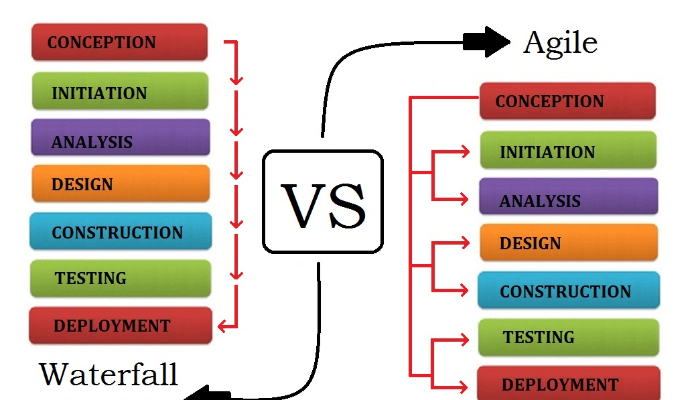
This level of transparency plays a significant role to constitute a healthy work environment. The agile methodology facilitates team members to view the progress right from the start to the end. Whereas in the traditional approach, the project manager holds the reins of the project, thus others don’t get to make the major decisions. The clients and decision-makers are actively involved in the initiation, planning, review, and testing. In agile methodology, everything is out there and transparent. “Create smart budgets and manage projects better. This way, all the last-minute changes can be accommodated without affecting the result and disrupting the project schedule. Unlike the traditional approach, agile methodology isn’t linear or follows a top-down approach. The best thing about this methodology is that it focuses more on the product than following a rigid structure. While working, if team members feel that there is a need to experiment and try something different than planned, the agile methodology easily allows them to do so. When it comes to making changes in the product or a process, agile methodology is much more flexible than the waterfall methodology. Many developers and project managers prefer to use the agile methodology for a variety of reasons. Why is Agile preferred not traditional PM approach Project manager provides estimates and gets approval from PO for the entire projectĮxcessive reviews and approvals by leaders Scrum master facilitates and the team does the estimation More serious about processes than the product Less focus on formal and directive processes When problems occur, the entire team works together to resolve itĮscalation to managers when problem arise CharacteristicsĬustomers are involved from the time work is being performedĬustomers get involved early in the project but not once the execution has started The table down below shows the major differences between the traditional and agile project methodology. Difference between traditional and agile project methodology Unlike the traditional approach, less time is spent on upfront planning and prioritization as agile is more flexible in changes and specifications developments. The process should respond to change rather than blindly following a planĪgile follows an iterative process where projects are divided into sprints of a shorter span.Customer collaboration is more vital than negotiation.
#Waterfall project management vs agile project management software
Working software is more important than comprehensive documentation.More focus on individuals and interactions than processes and tools.The agile manifesto has four essential values: While Agile is a general approach used for software development, it relies heavily on teamwork, collaboration, timeboxing tasks, and the flexibility to respond to change as quickly as possible. It is also called the Waterfall model.Īlso Read: Kanban vs Scrum: Which One Is the Better Approach to Use in 2019? What is Agile Project Management Interestingly, it also includes other methodologies such as PRINCE2, followed by various organizations under the UK government and private companies like Vodafone, Siemens, and others. The standard methodology PMBOK® defines tools and techniques that project managers follow for every step.

As per the conventional method, time and budget are variable, and requirements are fixed, due to which it often faces budget and timeline issues. The traditional project management approach emphasizes linear processes, documentation, upfront planning, and prioritization. Traditional project management is an established methodology where projects are run in a sequential cycle: initiation, planning, execution, monitoring, and closure.


 0 kommentar(er)
0 kommentar(er)
